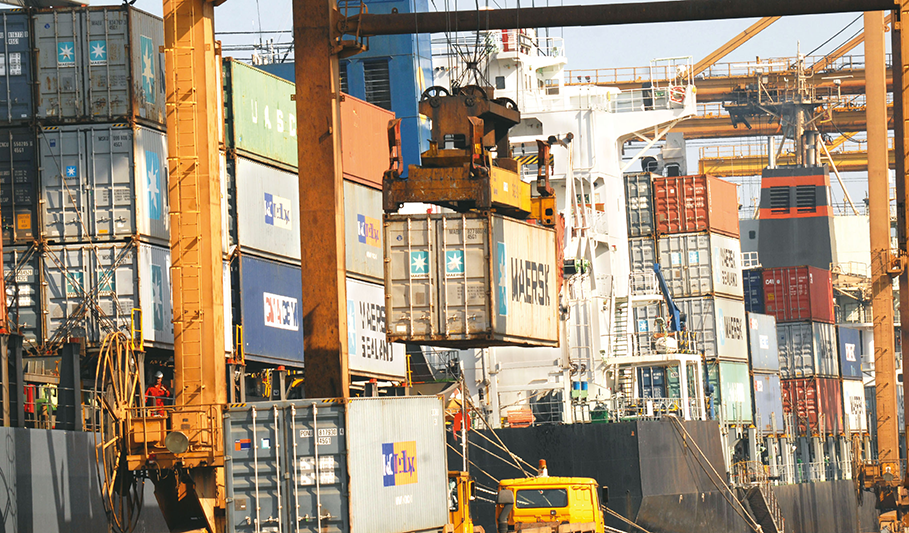TRADE UPDATE
CAPITAL OUTFLOWS AS RISKS GROW
Shiran Fernando rues the fact that global trends have derailed Sri Lanka’s economic momentum
 Sri Lanka’s exports for the first five months of 2018 indicate a healthy trend with 6.7 percent growth compared to the corresponding period last year. Growth has been driven by the export of garments (3.3%), petroleum products (48.4%) and seafood (12.3%).
Sri Lanka’s exports for the first five months of 2018 indicate a healthy trend with 6.7 percent growth compared to the corresponding period last year. Growth has been driven by the export of garments (3.3%), petroleum products (48.4%) and seafood (12.3%).
Garments witnessed a nine percent hike in May compared to the preceding months by recording a growth rate of between two and seven percent – albeit with a notable three percent contraction in April due to a decline in exports to the US. In this period, growth in apparel exports to Europe has been higher (6%) compared to the US market (3%).
Rising global crude oil prices have been a positive at least for Sri Lanka’s petroleum exports (mainly bunker and aviation fuel). However, agricultural exports contracted by two percent with outbound tea growing by a corresponding percentage while rubber, spice and coconut contracted substantially. The decline in agricultural exports therefore, has proved to be a drag on overall exports.
IMPORT GROWTH Expenditure on imports continues to be high this year with a near 12 percent increase in the first five months of 2018. This was driven by imports of fuel (23%), vehicles (nearly 111%) and gold (91%).
According to the Central Bank of Sri Lanka, vehicle imports have been fuelled by the importation of small engine capacity vehicles, hybrids and electric cars.
Gold imports in the first four months of 2018 represented 67 percent of last year’s total. The 15 percent tax on gold imports announced in April seems to have led to an immediate reaction with only US$ 0.1 million worth of gold imported in May. If this trend persists, it should ease pressure on the import bill.
The import of investment goods (with an overall decline of 2.6% in the first five months) mirrors the overall slowdown in construction – this is seen in the fall in demand for cement (8% in the January-April period) and the contraction witnessed in GDP over the January to March quarter.
FOREX INFLOWS Current account inflows from tourism earnings and remittances have fared better so far in 2018.
Tourism inflows in the first half grew by 15 percent while remittances rose by 3.3 percent in the first five months of 2018, having contracted in the prior year. This improvement comes on the back of an increase in global oil prices. Such trends augur well for the rest of the year.
FINANCIAL ACCOUNT Inflows to the government on a gross basis (for example, long-term and syndicated loans, and international sovereign bonds) rose by 17 percent in the first five months of this year. This was aided by the issue of US$ 2.5 billion in April.
Foreign direct investments (FDI) continued to increase, coming in at 492 million dollars in the first quarter of 2018 compared to US$ 193 million last year. However, the financial account has come under pressure with continuous outflows from foreign direct holdings in government securities as a result of capital outflows from emerging markets due to the dollar strengthening.
EXPORT STRATEGY In mid-July, the government launched the National Export Strategy. Its aim is to boost merchandise exports and services from 15.2 billion dollars in 2017 to US$ 28 billion by 2022.
The strategy centres on a vision to make ‘Sri Lanka an export hub, driven by innovation and investment,’ and encompasses six focus sectors – viz. IT and business process management (BPM), wellness tourism, boat building, electrical and electronic components, processed foods and beverages, and spices and concentrates.
While these focus sectors will be developed further, support functions such as logistics, trade information and promotion, infrastructure, and innovation and entrepreneurship, will look to improve business and operating environments.
The five year action plan will help the near-term growth of exports. Moreover, the strategy has the potential to diversify Sri Lanka’s export markets and expand its existing basket, thereby reducing the sensitivity to changes in global demand.
GLOBAL TRADE The back and forth tariffs being imposed by countries such as the US, China and others are sending global trade into the depths of uncertainty – and naturally, there are fears of global trade and currency wars.
The major negative for Sri Lanka is that the positive momentum in trade growth witnessed over the last 12 to 18 months may now be derailed. Such positive momentum – particularly in terms of demand from nations such as the US – has supported a rebound in exports thus far.
Furthermore, given the volatility in global markets and uncertainty over emerging markets such as Sri Lanka, there is a risk of further capital outflows as risk sentiment turns negative. A silver lining would be if the trade war results in a slowdown in the US economy, which would ease the pace of interest rate hikes and currency pressure on countries such as Sri Lanka.




